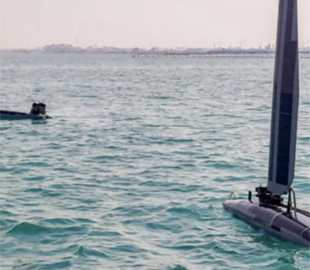
The US, UK and Japan are testing new drones in Australia in an experiment that will change the future of naval warfare . During the exercises, the military used 30 different systems — from the sea floor to the stratosphere.
Defense officials from the US, Australia, UK and Japan gathered in Australia's Jervis Bay this week for a week-long experiment to test how to integrate new technologies from different countries to speed up the transmission of intelligence at sea. Defenseone.com writes about it.
Madeleine Mortelmans, Acting Assistant Secretary of Defense for Strategy, Plans and Capabilities, announced the expansion of submarine warfare capabilities by testing the launch and lift of unmanned underwater systems from torpedo tubes on modern classes of British and American submarines.
“This will increase the range and capabilities of our underwater forces. We will integrate the lightweight Sting Ray torpedo into the P-8A maritime patrol aircraft, which will help our forces become interchangeable,” — she said.
200% Deposit Bonus up to €3,000 180% First Deposit Bonus up to $20,000The US brought the GARC unmanned surface boat, the Vanilla unmanned aerial vehicle and the Ocean Aero (Triton) underwater and surface vessel for tests. The participants of the event noted that 30 different systems were used during the exercises, — from the sea floor to the stratosphere. The military tested how well the systems could gather and disseminate intelligence.
“The tests were driven by specific scenarios. Unmanned and manned vehicles were used to perform intelligence, surveillance and reconnaissance, and to maintain the overall operational picture,” — said one official.
Another goal of the experiment was to determine how allies could modify or develop certain tactics, methods and procedures to enable faster intelligence sharing within the alliance — and do so with a wide range of drones and other devices.
One former senior military official told Defense One, “Integrating increasingly autonomous capabilities is critical to the future success of all three navies.” According to him, the experiment “provides a unique platform that allows each country to benefit from the achievements of the other, helping partners scale future opportunities better and faster.”

